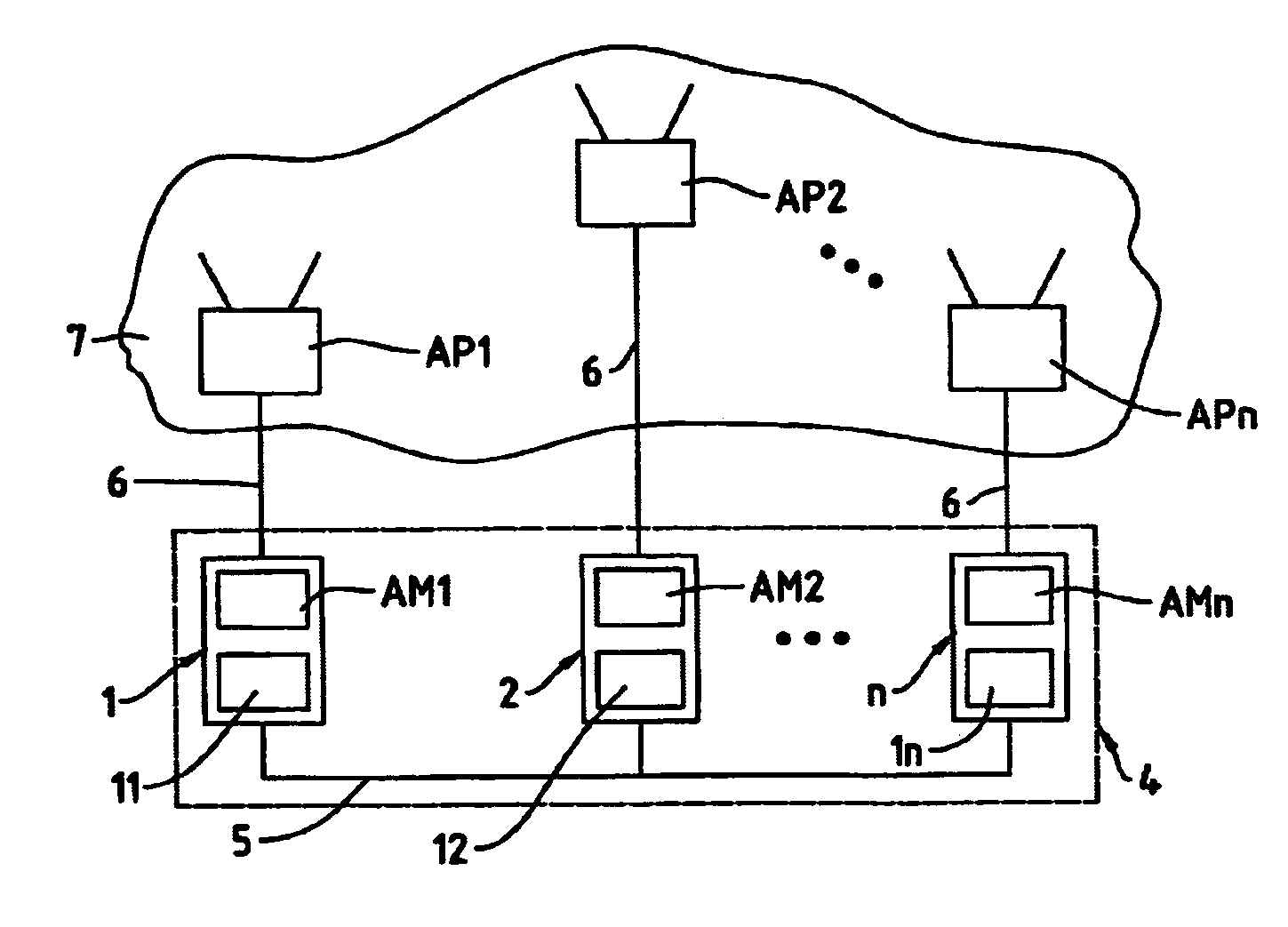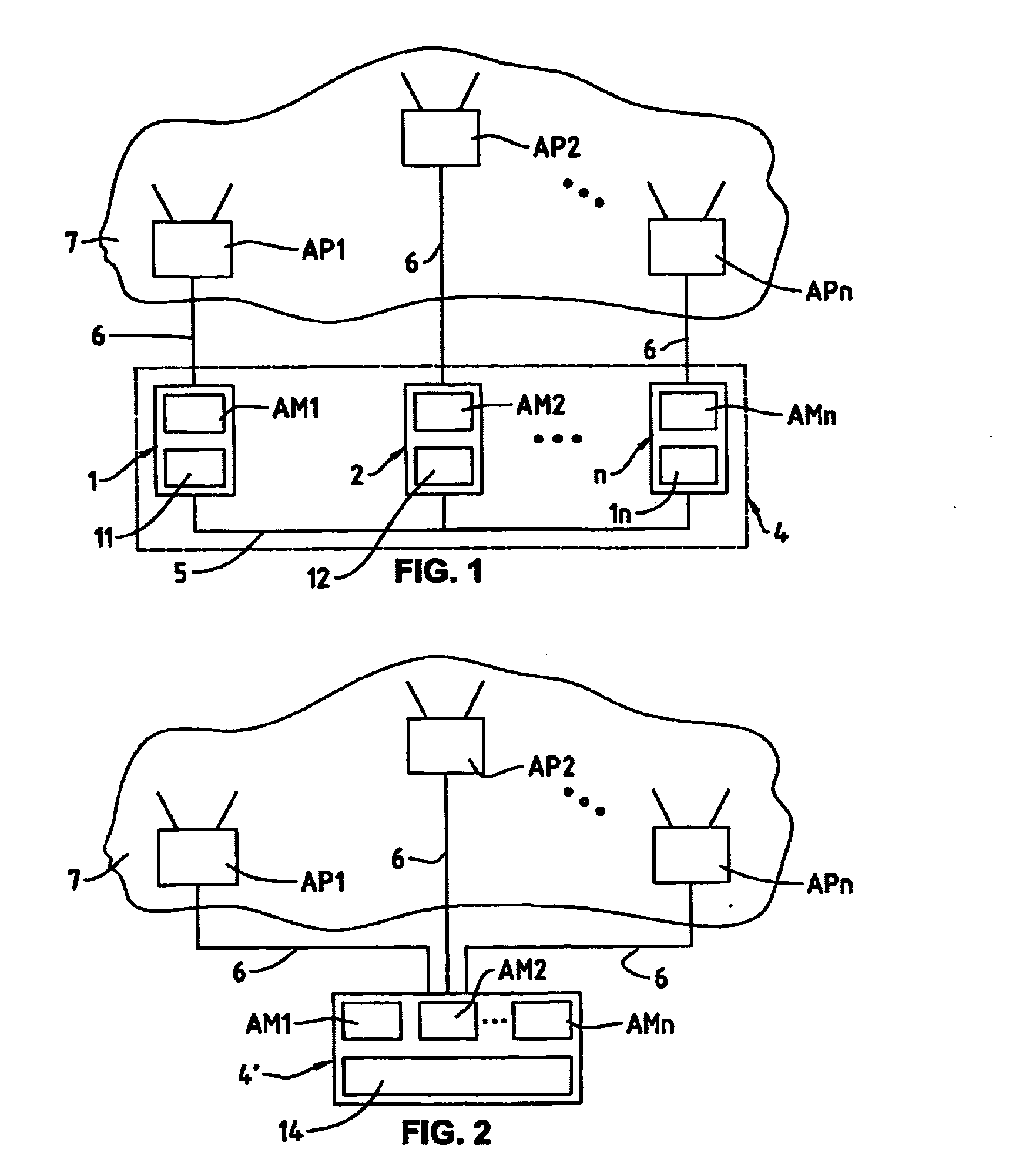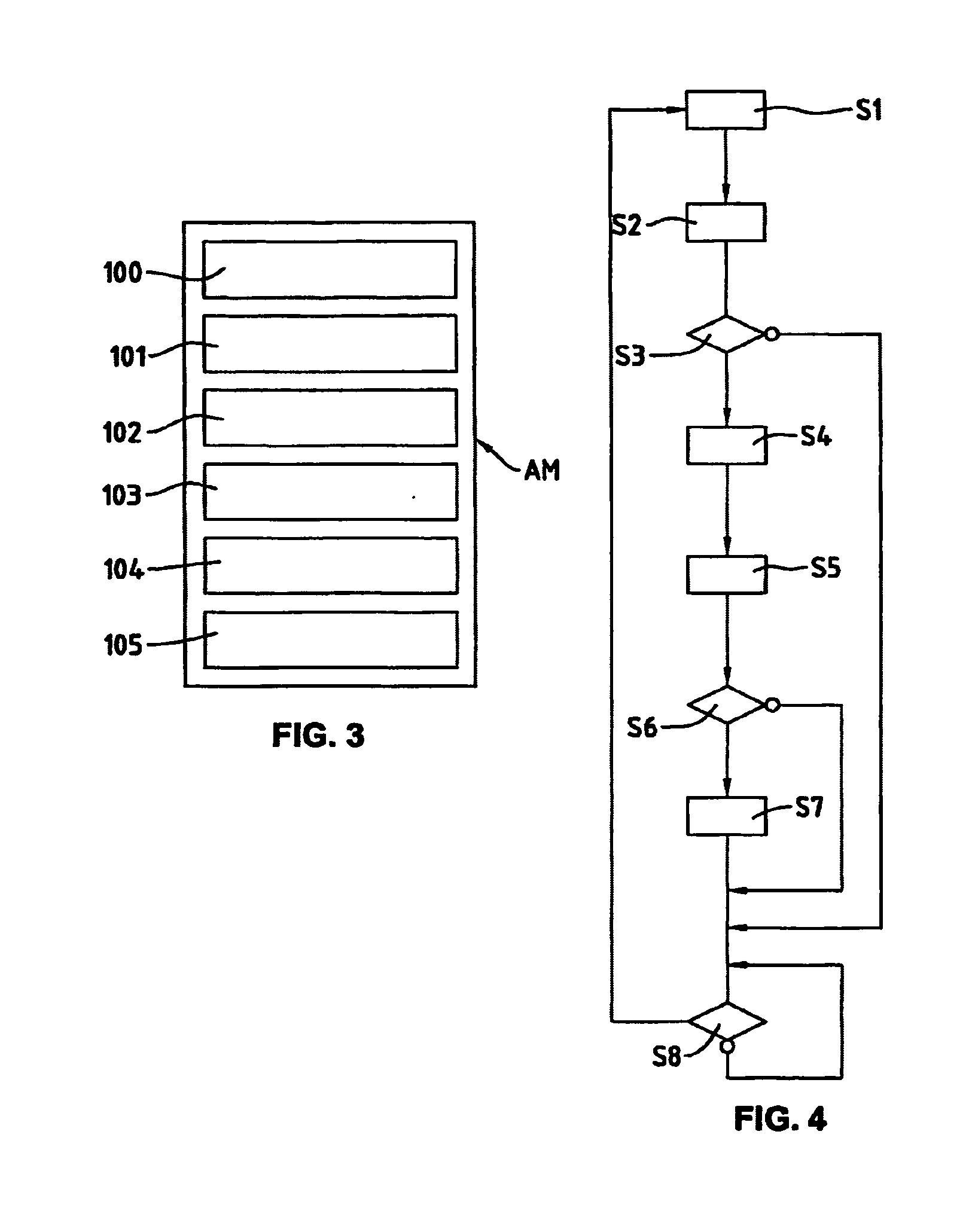System for the dynamic allocation of carrier frequencies to a access points of a wireless local area network (wlan)
a wireless local area network and dynamic assignment technology, applied in the direction of network planning, data switching by path configuration, wireless commuication services, etc., can solve the problems of not being particularly suitable for taking into account, often arising interference problems, and affecting the service life of users, so as to prevent the loss of signal during channel change
- Summary
- Abstract
- Description
- Claims
- Application Information
AI Technical Summary
Benefits of technology
Problems solved by technology
Method used
Image
Examples
first embodiment
[0022] The computer-based system 4 variant shown in FIG. 1 comprises a multiplicity of computers 1, 2, n, which are connected to one another via a communication connection 5. The communication connection 5 is a fixed net connection or a wireless connection, which enables in each case the data exchange between the computers 1, 2 and n. The computers 1, 2, n each comprise a communication module for the data exchange between the computers 1, 2, n via the communication connection 5, and for the data exchange with the computerized access points AP1, AP2, APn via the communication connections 6, for instance based on the so-called Simple Mail Transfer Protocol (SMTP). The computers 1, 2, n each further comprise an autonomous agent module AM1, AM2, AMn and an agent platform 11, 12, 1n belonging thereto. The autonomous agent modules AM1, AM2, AMn and the agent platforms 11, 12, 1n are preferably implemented as programmed software modules, for instance according to the FIPA specifications (...
second embodiment
[0023] The computer-based system 4′ variant shown in FIG. 2 comprises a computer on which the autonomous agent modules AM1, AM2, AMn are implemented on a common agent platform 14. The common agent platform 14 is preferably implemented, like the autonomous agent modules AM1, AM2, AMn, as programmed software module, for instance according to the FIPA specifications with the aid of the JADE software platform. The computer 4 further comprises a communication module for data exchange with the computerized access points AP1, AP2, APn, via the communication connections 6, for example based on SMTP.
[0024] The autonomous agent modules AM1, AM2, AMn and the agent platforms 11, 12, 1n, respectively 14 are preferably implemented on a computer program product comprising a computer-readable medium with computer program code means contained therein for control of one or more processors of the computer-based system 4 respectively 4′.
[0025] Both in the first embodiment variant according to FIG. 1 ...
PUM
 Login to View More
Login to View More Abstract
Description
Claims
Application Information
 Login to View More
Login to View More - R&D
- Intellectual Property
- Life Sciences
- Materials
- Tech Scout
- Unparalleled Data Quality
- Higher Quality Content
- 60% Fewer Hallucinations
Browse by: Latest US Patents, China's latest patents, Technical Efficacy Thesaurus, Application Domain, Technology Topic, Popular Technical Reports.
© 2025 PatSnap. All rights reserved.Legal|Privacy policy|Modern Slavery Act Transparency Statement|Sitemap|About US| Contact US: help@patsnap.com



